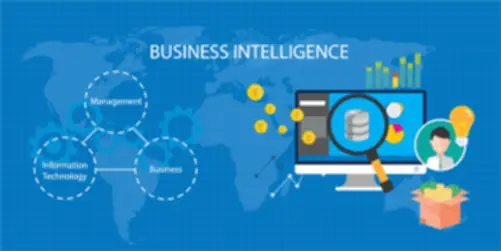Distributed cloud computing is the distribution of public cloud companies to totally different physical places whereas the operation, governance, updates, and evolution of the companies are managed centrally. With a non-public cloud, an organization builds and maintains its personal underlying cloud infrastructure. This mannequin presents the versatility and convenience of the cloud, while preserving the administration, control and security common cloud computing vs distributed computing to native information centers. A personal cloud is a proprietary network or a knowledge middle that provides hosted services to a limited variety of folks, with certain access and permissions settings. A hybrid cloud provides a blended computing setting where knowledge and assets can be shared between both public and private clouds.
Challenges In Distributed Cloud Computing

Pervasive computing, also called ubiquitous (Changed and removed) computing, is the newest development in the integration of common objects with microprocessors to allow the communication of data. By combining the sources of the basic public cloud and the non-public cloud, a hybrid cloud is created, which is a heterogeneous distributed system. A consumer wants a digital computing environment that’s distinct from other users and most probably isolated.
Reliability And Fault Tolerance

For a greater understanding of the concepts for each of them, it is extremely much essential to have good data in regards to the Distributed Systems and also information on how they differ from the Centralized Computing Systems. Distributed computing has introduced a paradigm shift in the fields of life sciences and healthcare. This technology is empowering researchers and healthcare professionals to perform complicated computations and information analyses that have been beforehand inconceivable or impractical. In this sort of techniques, the computer systems connected inside a network talk through message passing to keep a monitor of their actions. The on-line visitors of many organizations is topic to fast and dramatic adjustments, probably due to reported news or different elements.
Cloud Computing Service Suppliers
Scaling-up in this context refers to the ability of the cloud computing platform to accommodate modifications in service supply with out compromising performance. Multiple software program parts running on varied computer systems make up a distributed computer system, which features as a single unit. A distributed system’s computer systems can be geographically separated and linked by a large area community, or they are often bodily shut to 1 one other and connected by an area community.

Virtualization and containerization are key applied sciences in distributed computing. They permit for the efficient deployment and management of applications throughout multiple machines. Peer-to-Peer (P2P) architecture is a type of distributed computing structure the place all nodes are equal, and each node can perform as each a client and a server. In this mannequin, there is not a central server; instead, every node can request services from and supply companies to different nodes. This decentralization makes P2P architectures highly scalable and resilient, as there is not a single level of failure.
Like distributed computing, grid computing utilizes a number of computing sources which might be unfold across totally different areas to unravel computational tasks. However, distributed computing can involve various types of architectures and nodes, while grid computing has a typical, outlined architecture consisting of nodes with at least four layers. Additionally, all nodes in a grid computing network use the identical network protocol to find a way to act in unison as a supercomputer. Despite being composed of a number of unbiased nodes, the system operates as a single entity from the person’s perspective. This signifies that the complexities of the underlying architecture, such as the division of duties, the communication between nodes, and the handling of failures, are hidden from the user.
In order to know the advantages and disadvantages of each of those computing applied sciences, we first understood these ideas individually earlier than attempting to differentiate between them. Understand the benefits and downsides of each of those computing technologies, we first understood these concepts individually before attempting to distinguish between them. If you want on-premises or cloud resources, you must determine which is more practical. It takes less time to resolve complex issues when they’re broken down into smaller pieces and worked on by a number of computers concurrently, due to distributed methods. Additionally, compared to single machines, distributed methods are inherently more fault tolerant.
Distributed computing supplies the pliability companies need to resist such surges. Distributed computing is usually deployed in specific environments, such as local networks or devoted clusters. Hundreds of startups and companies like Samsung, Airbus, NEC, and Disney depend on us to build great software program merchandise. We may help you too, by enabling you to hire and effortlessly manage skilled developers. The total price can also be increased by increased processing overhead introduced on by additional computation and knowledge change. Distributed techniques offer faster performance with optimum resource use of the underlying hardware.
Distributed cloud computing helps organizations adhere to local rules and implement strong safety measures across totally different environments. When considering a move to the cloud, businesses must assess key factors corresponding to latency, bandwidth, high quality of service and safety. This contains technical incompatibilities, authorized and regulatory limitations and substantial prices incurred from sizable knowledge migrations. The strategy of transferring functions and different data to the cloud typically causes complications.
Cloud computing platforms offer an unlimited array of resources and services, enabling companies to scale and innovate sooner based mostly on distributed computing infrastructure. In distinction, distributed computing could be both centralized or decentralized, depending on the architecture. The computers in a distributed system could additionally be bodily shut collectively and linked by a neighborhood community, or they could be geographically distant and linked by a large space network. Instead of leaving a robust computer idle whereas a much less powerful one struggles with a task, the system can distribute the workload according to the capabilities of every node. This ensures that each one resources are used optimally, additional enhancing the effectivity of the system.
- We have seen what both distributed computing and cloud computing are in this article and likewise lined the distinction between distributed computing and cloud computing.
- This parallel processing capability is very useful for complicated computational tasks that might take an unfeasibly very long time to finish on a single computer.
- To effectively handle an MMO, it takes whole methods coming together and dealing in shut conjunction to deliver a seamless online expertise that’s simultaneously being shared by 1000’s of players in a real-time environment.
- Your units, you’re utilizing cloud computing because distributed computing is being used.
- One Central laptop holds all the cards in controlling all the peripheral and computes the advanced computations and hence the name, Centralized Computing.
However, when distributed techniques are scaled up, they will clear up extra complicated challenges. Let’s discover some methods in which completely different industries use high-performing distributed functions. Cloud storage software program providers deal with a corporation’s knowledge management wants however often charge knowledge egress fees. While knowledge ingress into these platforms is normally free, customers usually are charged to maneuver knowledge out.
Examples of PaaS merchandise include Salesforce Lightning, AWS Elastic Beanstalk and Google App Engine. “Distributed computing is useful in eventualities where tasks or knowledge processing demands exceed the capabilities of a single laptop or require redundancy for fault tolerance,” Jindal informed Built In. Expanding a distributed computing system is as easy as including a further node to the prevailing network. These extremely configurable techniques function scale-out structure, designed to scale horizontally so as to deal with rising workloads or heftier datasets.
Managing a distributed system requires subtle software program to deal with communication, synchronization, and security throughout a quantity of nodes. In a distributed cloud computing surroundings, implementing sturdy data management practices is crucial. This consists of using knowledge replication strategies to ensure information availability and consistency throughout all nodes. Additionally, employing data partitioning techniques may help manage large data volumes extra effectively. Also, consider using distributed databases designed to deal with the challenges of distributed environments.
Transform Your Business With AI Software Development Solutions https://www.globalcloudteam.com/ — be successful, be the first!
